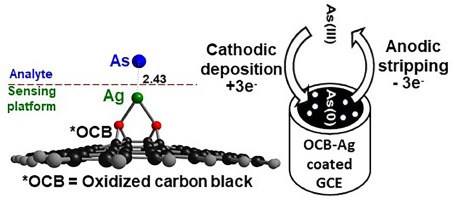
Adjusting the location of a reaction vessel on a magnetic stirrer can greatly influence the results of a chemical reaction. This is the finding of scientists collaborating with Valentine Ananikov from the Russian Academy of Sciences, who discovered this while conducting the same reaction simultaneously in different vials positioned side-by-side on the same stirrer. ‘We discovered that the speed of the reaction, the quality of the product, and even the creation of nanoparticles varied with the vessel’s placement,’ Ananikov explains. ‘In certain instances, the differences were significant enough to clarify why another laboratory might struggle to replicate the findings.’ To address this issue, the team advises performing control experiments in what they refer to as the ‘green zone’ of the stirrer, where stirring stability and efficiency are maximized.
‘Numerous chemists depend on magnetic stirrers daily, presuming they operate uniformly over their surface, yet our experiments uncovered a rather unexpected scenario,’ states Ananikov. He and his colleagues noted that the behavior of the bar rotation varied when it was positioned at various spots on and above the stirrer, sometimes halting entirely in certain locations. These new findings are crucial not only for chemistry but also for disciplines such as biology, life sciences, and material sciences.
In 2019, Ananikov and his team cautioned that ‘dirty’ stirrer bars tainted with tiny amounts of metal could be the cause of the unanticipated reactivity observed in some experiments.
The researchers examined multiple types of reactions utilizing magnetic stirrers from various manufacturers. Their experimental setup was straightforward: they employed cameras to capture color changes and conducted NMR spectroscopy and electron microscopy studies to observe chemical modifications and analyze the products closely.
One process they investigated was the development of palladium particles in solution. ‘We observed that, based on the vial’s position on the magnetic stirrer, the particles formed at differing rates and exhibited varying sizes, even though all other conditions remained identical,’ notes Ananikov.
The team also explored the preparation of palladium-on-carbon catalysts, commonly used in organic synthesis. ‘Once more, the position of the vial on the stirrer led to variations in the speed of catalyst formation and the ultimate structure,’ explains Ananikov. In some vials, the carbon support was even physically compromised by the stirrer bar, altering the catalyst’s shape, he adds.
In a further test, the researchers examined the Suzuki–Miyaura cross-coupling reaction, which is significant in the manufacturing of pharmaceuticals and agrochemicals. They found that the same reaction mixture yielded notably different product outcomes based on its placement on the stirrer. ‘We observed conversion discrepancies of around 10 to 20%, and in some instances, even greater,’ Ananikov states. ‘That’s sufficient to make a successful experiment appear as a poorly reproducible failure in another lab.’ The scientists also investigated processes such as polymerization and the Belousov–Zhabotinsky reaction – renowned for its oscillating, color-changing patterns – and in every instance, stirring inconsistencies affected the reproducibility of the results.
Drawing from their findings, the team proposed a straightforward method to map magnetic fields – using a metallic powder – and identified the most effective and stable stirring locations on the plate. ‘For any significant experiment, we highly recommend conducting a control run with a single vial placed in this “green zone,”’ advises Ananikov. He additionally suggests documenting the specific type of stirrer, the stir bar, and the type and size of the reaction vessel in the experimental section. ‘Manufacturers could also assist by indicating the most efficient stirring areas on their devices, enabling researchers to locate optimal positions for their reactions,’ he adds.
Rick Danheiser from the Massachusetts Institute of Technology in the US, who was not part of the study, acknowledges that seasoned synthetic chemists have long recognized that the manner in which reaction mixtures are stirred can affect the outcomes of chemical processes. ‘Ananikov and colleagues now present an impressive systematic investigation into the impact of the positioning of reaction vials on magnetic stirrers on the results of several heterogeneous reactions,’ he remarks. ‘Their research will motivate scientists to pay closer attention to this experimental variable and ensure they provide a more detailed description of the stirring method when reporting experimental procedures in publications.’